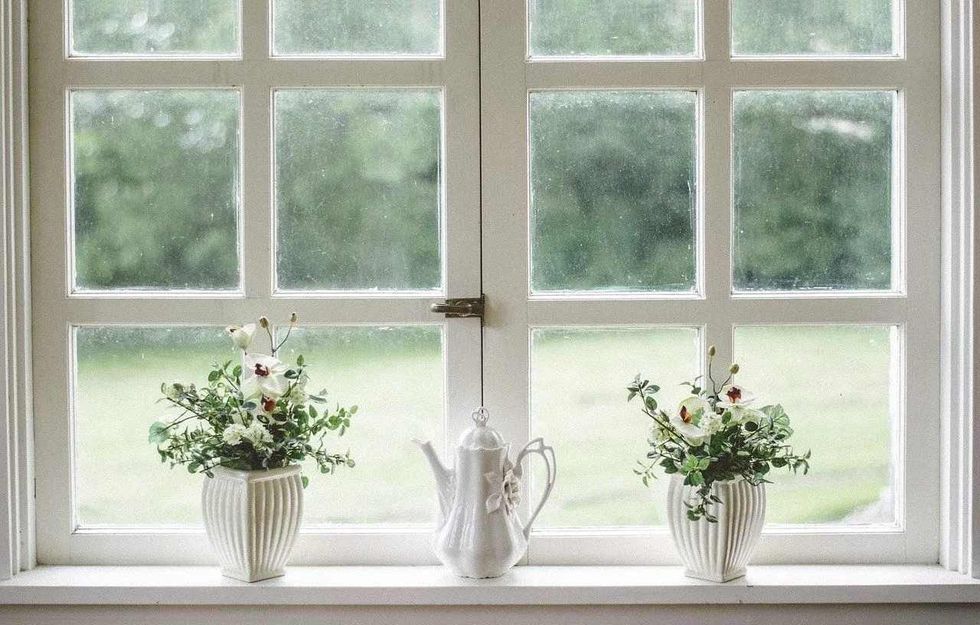Have you ever looked at a window and wondered what has gone into the making of it?
Do you know the history and evolution of windows around the world?
A window can be defined as a structural opening in the wall to allow the passage of fresh air and warm sun into the room. Windows can also give pleasure and lift mood, as they give us a view from outside.
Sometimes, windows also serve an aesthetic purpose, decorating a room or the outside of the house, especially if it has unusual features, like stained glass. Thus, windows form a crucial component of every structure. It also keeps the temperature stable inside the room.
There are many things considered while making a window such as design, materials to be used, positioning, and operation movement.
Types Of Windows
There are many types of windows that are made according to various purposes. Some are designed for ventilation, to incorporate an open balcony, to merely serve the protect us from wind and sunlight, or to enjoy scenery.
Sliding windows are the most common, where there are window shutters that are movable within the window frame. Fixed windows are fixed to the wall and cannot be closed or open. Earlier stone buildings had these types of windows, that merely transmit sunlight inside the room.
And oriel windows, also known as bay windows, were most common in the ancient Medieval era, especially in illustrations of castles and palaces. These windows are supported by corbels or brackets.
Another popular type is the arch window, which has a half-circle shape of the arch on the top. This gave a Victorian effect in design and has a rectangular shape in the bottom.
Materials Used To Make Windows
Materials selected to make windows take into account climate, and living conditions, as well as aesthetics. In rural areas, often old houses have used wood as a prime material for construction.
These days, bamboo houses are common and sustainable, especially in Asian countries, and naturally acquired materials are commonly used. Thus, wood is a popular material used that also adds natural serene beauty and gives a traditional look. The durability of wood is great and plus it is environmentally friendly.
The other common material used is vinyl which is also known as PVC, especially in the Western world. Pure vinyl lasts longer and has strong durability, although it is expensive. They make a good choice for window frames, such as airtight frames, and many construction items, such as glazed doors.
The next most-popular material is aluminum. They give a sleek appearance and are light in weight. They can support huge glass and provide more light in a space.
Wood cladding is also widely used, where frames are made of a combination of aluminum and fiberglass. Composite window frames, which can be made of wood, metal, and vinyl, give you a much stronger and more durable window. The entire window frame can be made of composite.
Why do we need windows?
Modern buildings have a contemporary look with regular-size windows. Modern windows have airtight frames and are often double-glazed. Thin slices of glass and decorative glass can also be used.
These days, to have a sustainable lifestyle and save energy costs, many people design new windows with similar patterns. In the early days, there were small openings in the wall that served as an eye hole or a peephole for residents to keep a watch on possible threats or even spy on the enemy.
The British version of windows in the form of arches is also made for customized architectural designs. Corporate offices and institutions have vertical windows to allow enough sunlight.
Sometimes, architectural windows are not functionally used for ventilation. These inefficient windows often have stained glass as they are not cleaned frequently. State and royal buildings, like the White House and Buckingham Palace, have vintage-style windows.
All these factors contribute to the utility of a window, which are designed to suit the needs of every structure.
Fun Facts About Windows
Paper windows originated in the Far East and were the first windows to be invented, to let in natural light.
Did you know that before the advent of glass windows, in Europe, windows were made with flattened pieces of animal horns and animal hide during the Middle Ages?
The British popularized the use of glass, in the 17th century. However, the first known use of glass in windows was far further back - it is known that the Romans were the first to make use of glass windows as far back as 100 AD!
Since then, polished plate glass was used. In 1834, the technique of making glass sheets was imported from Germany. From then on, Britain started to make windows with larger glass sheets at an affordable price. Then, in 1888, opaque glass was used which was made by machine rolling.
The use of laminated glass began in 1903 and allowed much wider glass panes. The advantage of laminated glass was that it could be used as a single sheet without bars.
In the 20th century, however, new techniques of production came which led to innovative designing of glass windows which are now common everywhere in the world.
The word 'window' comes from the Old Norse 'vindauga'; 'vindr' meant 'wind' and 'auga' meant 'eye'.
The tallest building in the world, the Burj Khalifa, unsurprisingly also has the most windows. There are an incredible 24,000 windows in the tallest building.
Some fun facts about windows in famous buildings include the fact that the White House boasts 147 windows while Buckingham Palace has almost 760.
In Britain and France in the 18th and 19th centuries, a window tax was introduced. Thus many people bricked up their windows.
The famous Winchester House in San Jose, which is said to be haunted, has several windows that have 13 panes, probably in order to foil ghosts!








